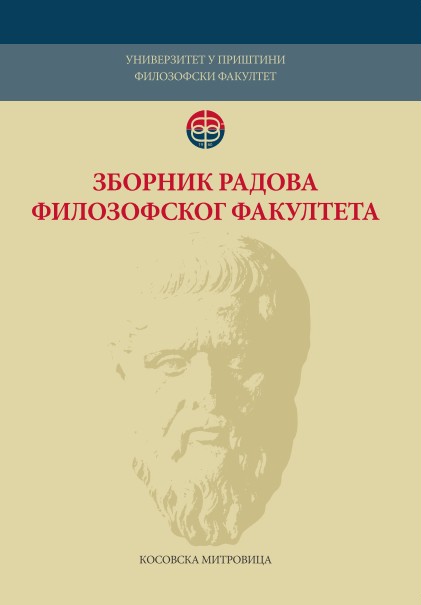Нове тенденције у турском језику
New tendencies in the Turkish language
Author(s): Mirjana TeodosijevićSubject(s): Language studies, Language and Literature Studies, Turkic languages
Published by: Филозофски факултет, Универзитет у Приштини
Keywords: Turkish language; new tendencies; status constructus; exclusion of suffixes; participles; Turkish language deterioration; Anglo-Saxon loan words
Summary/Abstract: Following the establishment of the Republic of Turkey on the 29th of October 1923, Mustapha Kemal Ataturk began the implementation of fundamental reforms for the creation of a new identity for the Turkish nation. One of the most important reforms was the adoption of Latin script in place of Arabic, as well as the cleansing of the Turkish language of Arabic and Persian linguistic influence and borrowed words. It is from then onwards that the Turkish language began to change continually and was modelled under the control of the Turkish Linguistic Society in whose undertakings numerous linguists, writers and cultural workers took part. Many books were published: grammar books that established norms for the Turkish language, single-language dictionaries, dictionaries of neologism to replace archaic and Ottoman words, dual-language dictionaries, orthographic rule books, professional and scientific journals, as well as organizing many Turkish Language congresses in which all aspects and issues related to language usage were discussed and studied. Since it is a known fact that languages are constantly undergoing transformation in space and time, all these changes, especially during the last twenty years, had been under the watchful eyes of numerous linguists who were responsible for scrutinizing all relevant aspects of the language on the grammatical, lexical and socio-cultural levels. However, many of these changes had not been promptly and adequately processed in the relevant Turkish language grammar books, a fact that today poses a special problem for persons studying the Turkish language. Thus, in this paper we have focused our attention solely on atypical usage of the language on grammatical and lexical levels, without carrying out any deeper analysis of those instances because such an undertaking would require of us to enter the domain of linguistic field-work research. Within the spoken and written Turkish language certain grammatical and lexical forms have been shortened for reasons of economy in expression. Also, present is a degree of language degeneration, a spoiling and tainting of the language that is occurring due to the strong influence of social networks and text-messaging apps for which it is not important to be grammatically correct or free from any orthographic and writing mistakes, rather the aim is that they be as short as possible, so that they could be typed out rapidly and dispatched even quicker. Considering that the movement for linguistic purism was of prime importance for the cleansing of the language of loanwords, a paradoxical situation has been appearing in recent years where there is an unstoppable influx of Anglo-Saxon words, as well as the return in usage of long-discarded and forgotten archaic words within the standard language. The agglutinative structure of the Turkish language is especially susceptible to the derivation of new hybrid-words in the sociolects that often represent a mixture of the Turkish and English languages, which for the younger generations is much more acceptable than the slightly forced and politicized usage of archaic words that have been replaced by Turkish language equivalents quite some time ago.
Journal: Зборник радова Филозофског факултета у Приштини
- Issue Year: 49/2019
- Issue No: 4
- Page Range: 173-184
- Page Count: 12
- Language: Serbian

